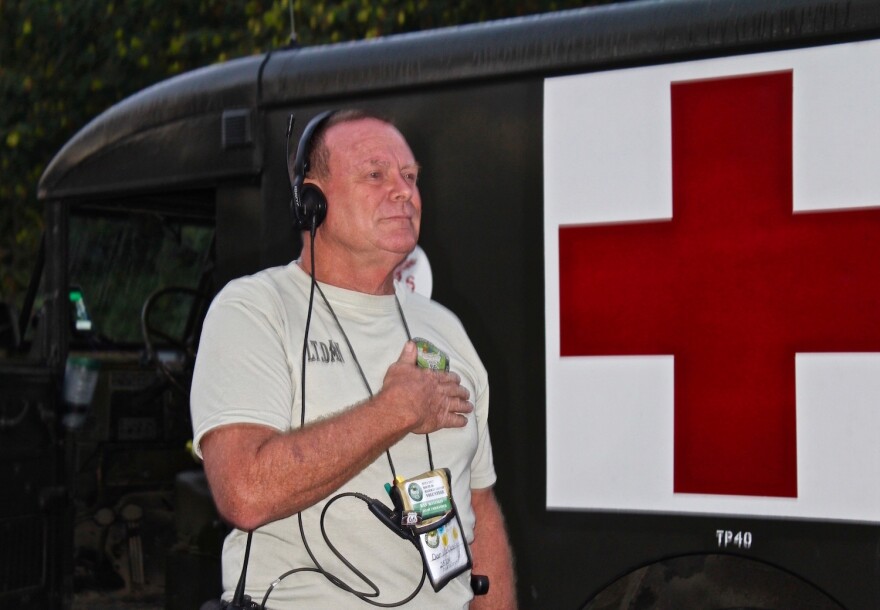A convoy of 60 vintage military vehicles idled on the parking lot at Six Flags St. Louis in Eureka last Wednesday, ready to roll at sunrise.
But first, the convoy paused for the National Anthem.
These can-do jeeps, ambulances and trucks were parked here overnight, while the drivers slept at nearby hotels and campgrounds. The vehicles were built to transport soldiers and supplies during World War II, and the Korean and Vietnam wars. Now, they’re vehicles of history, owned by members of the Military Vehicle Preservation Association, an organization of nearly 10,000 collectors.
And they have a new mission: honoring America’s veterans on a 2,400-mile trip from Chicago to Santa Monica, California, following the path of the old Route 66.
“This is one of the ways that we reach out to the public and preserve our history, celebrate veterans and also show how the Army used their vehicles. And we call this history in motion,’’ said Dan McCluskey, the convoy commander. “Most people are used to seeing a military vehicle up on a pedestal in a museum.’’

McCluskey, a retired aviation engineer from California, was driving a 1964 Dodge ambulance from the Vietnam War era.
This was Day Five of their 29-day trip, which they refer to as “the longest veterans parade in America.” They departed from the county fairgrounds in Wheaton, Illinois, just outside Chicago on Sept. 16 and expect to be in Santa Monica on Oct. 14. With an average speed of 35 mph, they can cover between 100 and 180 miles a day.
This is the group’s fourth convoy, and the warm welcome they find in America’s small towns never gets old, said McCluskey.
“We’re not going to big cities,’’ he said. “We visited cities that the interstate had bypassed years ago.’’
The convoy moves with military precision — ambulances and jeeps up front, heavy trucks in the rear. Mechanics travel with the convoy, along with a flatbed truck to haul vehicles that break down.
The first stop on this day was about 25 miles down the road — for hot coffee and doughnuts provided by VFW Post 2482 in St. Clair, Missouri.
Among a small group of spectators gathered to greet the convoy was Rich Herberholz of nearby Union, an 85-year-old Navy veteran.
As he peered inside a 1942 Ford jeep, he said it reminded him of the one he drove while stationed in North Africa — until a Marine totaled it. He smiled at the memory and thanked his grandson-in-law for bringing him.
“I’ll never, ever forget this day,’’ Herberholz said. “Because it brings back so many memories. My service time. It makes you think."

About two-thirds of the convoy members are veterans. Among the oldest is 87-year-old Gaston Barmore of Houston, Texas. He’s a Korean War veteran who’s been restoring military vehicles for more than 20 years.
“I think it’s important to get them out for the public to see the military vehicles, rather than having to go to a museum and look at ‘em,’’ Barmore said.
He never tires of talking to people along the way and answering their questions.
“I think the most often is, what kind of vehicle it is,’’ he said. “People don’t know that much about military vehicles. And if it’s a smaller vehicle, everybody thinks it’s a jeep."
Follow Mary Delach Leonard on Twitter: @marydleonard







